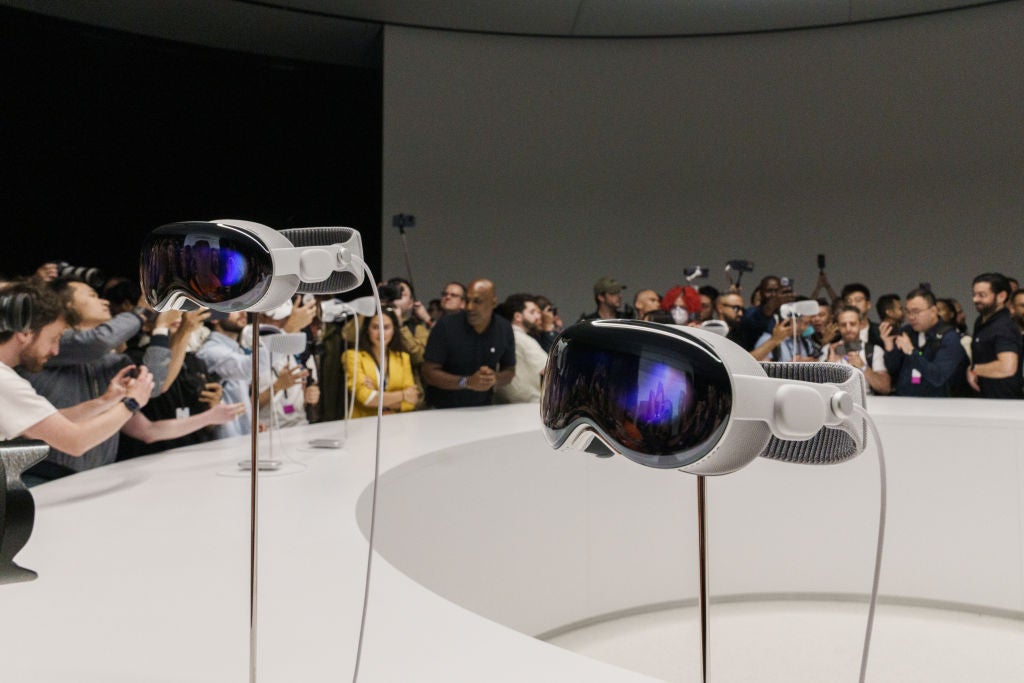Apple announced the upcoming launch of its new mixed reality headset, the $3,499 Vision Pro, at its annual Worldwide Developer Conference (WWDC) in Cupertino, California on 5 June.
The Vision Pro does away with physical controllers, using eye tracking, finger movements, and voice instead, providing a fantastic, futuristic view of consumer and personal device interactions. This is what Meta Quest headsets want to be when they grow up. The Vision Pro uses some pioneering AI tech to create eyes on the exterior display (called EyeSight) when detecting someone nearby. The EyeSight display alters itself while using an app, to show that a consumer’s attention is elsewhere and not on the person next to them. No other headset in the market offers this kind of technology, designed to make the experience of wearing a headset less isolating.
A test to gauge if Apple can exist beyond the iPhone
Apple has created a new platform that could supplant three of its key products – the iPhone, the iPad, and the Mac. But this is not going to happen anytime soon. The headset is extremely expensive, does not have cellular connectivity, and is an extended display at best. But the Vision Pro is a test to gauge if Apple can exist beyond the iPhone.
The headset is aimed at developers with immersive use cases geared toward productivity, enterprise, and entertainment. Apple’s 34 million-plus active developer community will be key here, as will be cross compatibility with apps from iPhone, iPad, and MacBook platforms. When the headset launches in early 2024 in the US, it will already have a swathe of AR/VR games, apps, and services, a category growing in importance to Apple’s bottom line.
Vision Pro – smart marketing but a tricky price point
The Vision Pro’s $3,499 starting sticker price will inhibit adoption, but Apple is not looking to make money off this product just yet, nor sell a truckload of these devices. Apple’s entry into this segment will garner mainstream attention for mixed reality hardware, the likes of which only Apple is capable of. The Vision Pro is Apple’s attempt at cracking open the extended reality (XR) door to create an addressable market with iterations of Vision Pro in the years to come.
Apple is marketing the headset as an extended portable display, which is smart – hence the name Vision Pro – steering away from any mention of ‘reality’ or the metaverse, both of which Meta has seized in recent times. This is a first-gen product, and Apple is playing a slow, long game to free itself from its iPhone dependency.

US Tariffs are shifting - will you react or anticipate?
Don’t let policy changes catch you off guard. Stay proactive with real-time data and expert analysis.
By GlobalDataAvailability of Disney’s huge content library on the Vision Pro for a full immersive experience is a plus, as is the alliance with Unity for 3D content. VR and AR headset sales and active headset engagement have been disappointing in the consumer segment, but Apple is sitting on a pile of cash and can attract early adopters. GlobalData estimates that annual revenues from AR headsets will reach more than $13bn by 2030, making this market ripe for innovation.







